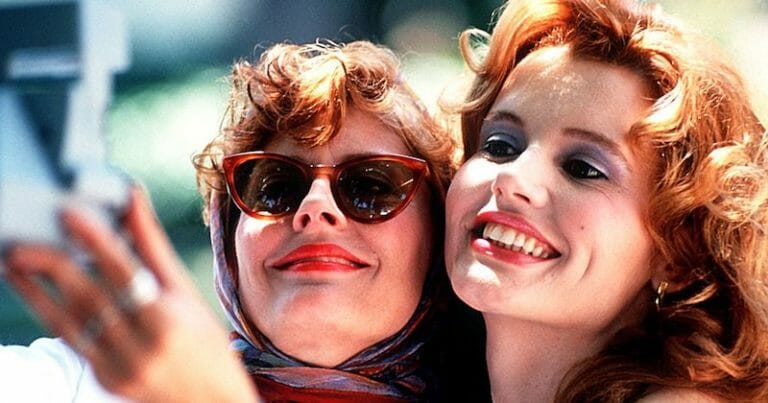By Ken Miyamoto · September 9, 2019

Iconic screenwriter Callie Khouri offers screenwriting wisdom that screenwriters can apply to their own craft.
Welcome to our ongoing Learning from the Masters and Industry Insiders series where we seek out and feature excellent videos, interviews, and discussions of the art, craft, and business of screenwriting and pull the best words of wisdom, writing tips, and screenwriting advice.
Here we turn to the Script Mailer video that features an interview with Callie Khouri, academy award-winning screenwriter behind Thelma and Louise. We pull the best pieces of wisdom from the video and add our own elaboration as well.
Read More: First Time’s The Charm: The Greatest Screenwriting Debuts
Before Khouri was a screenwriter, she worked in various positions within the music video industry of the 1980s. The experience taught her about story structure and she learned a pivotal lesson that she would transfer to her screenwriting process.
“It [became] so apparent that all you have in the world to tell [your] story is what’s happening when the shutter is open. It really does make you focus.”
Film is a visual medium. You don’t have the freedom of the page as you do when writing short stories and novel. Everything you write as a screenwriter has to work within the frame of a camera.
Much is said and written about how difficult it is to write a screenplay. You need to know structure. You need to know your genre. You need to know how to write engaging characterization.
What isn’t divulged to most writers is that it can actually be very easy.
“Thelma and Louise was actually very easy. It was one of those times where I would sit down and there it would be.”
The paralysis of analysis is what causes what many call writer’s block. You worry so much about the technical aspects of telling the story that the actual story that’s trying to come to life is held back by your own insecurities and over-analytical thought process.
Storytelling is in your DNA. It always was and always has been. Sometimes you just have to let the story and those characters live and breath and flow.
Writing can be easy — if you’re open to letting it be.
When asked what helps make a scene suspenseful, Khouri pointed to the scene description.
“I think that’s where economy comes in. You have to choose your sentences very carefully. And I think the description is every bit as important as the dialogue. And I always say that when I’m writing, I really try to see the whole thing with no dialogue first, so that the dialogue I put in or the description I put in is only what is absolutely necessary to tell the story. So I try to be as economic as possible and try to not just give any information until the exact moment that it’s needed. Or not say anything that isn’t absolutely necessary.”
Callie Khouri’s full 90-minute interview is available online. You can watch her screenwriting advice portion of that video below, complete with further elaboration on the above points as well as an excellent discussion on a pivotal scene in Thelma and Louise.
For all the latest from The Script Lab, be sure to follow us on Twitter, Facebook, and Instagram.
And become a member of TSL 360 to enjoy the LARGEST screenwriting education content library, featuring masterclasses, deep-dive interviews, and lectures from Academy Award-winning screenwriters, TV show-runners, producers, literary managers, agents, studio executives, and leading educators – all in one place.